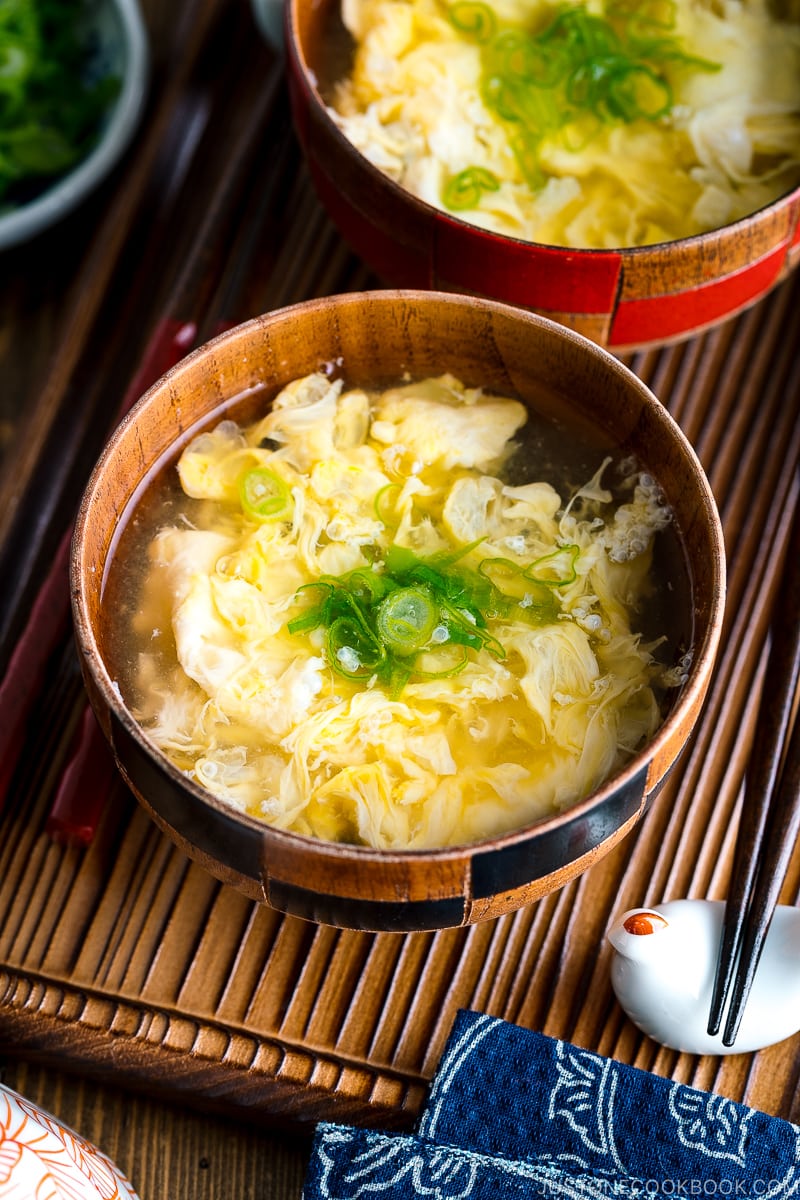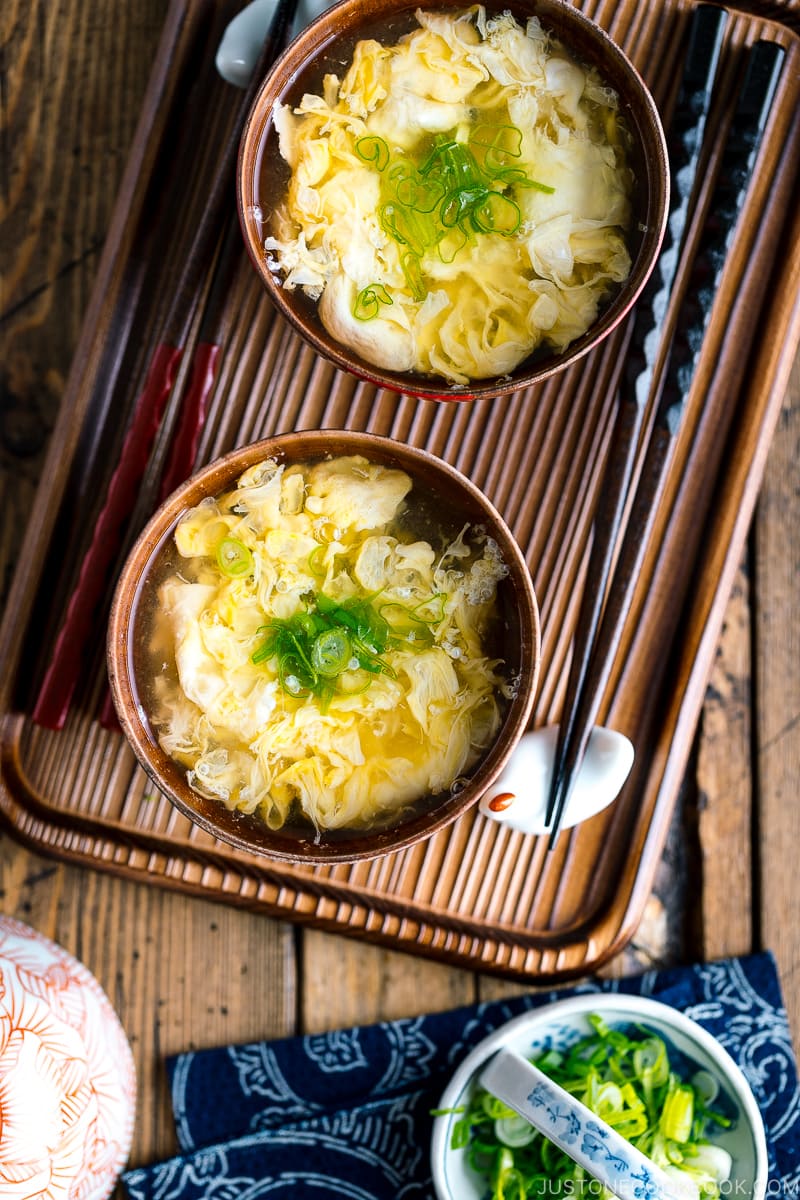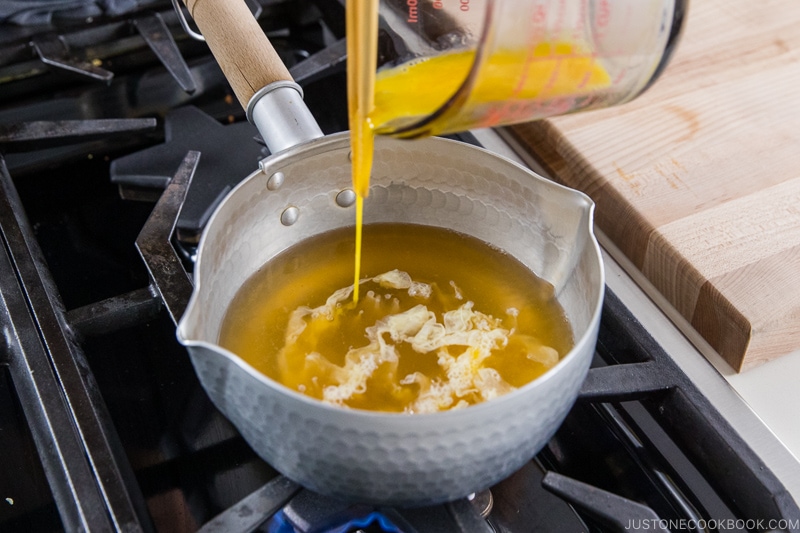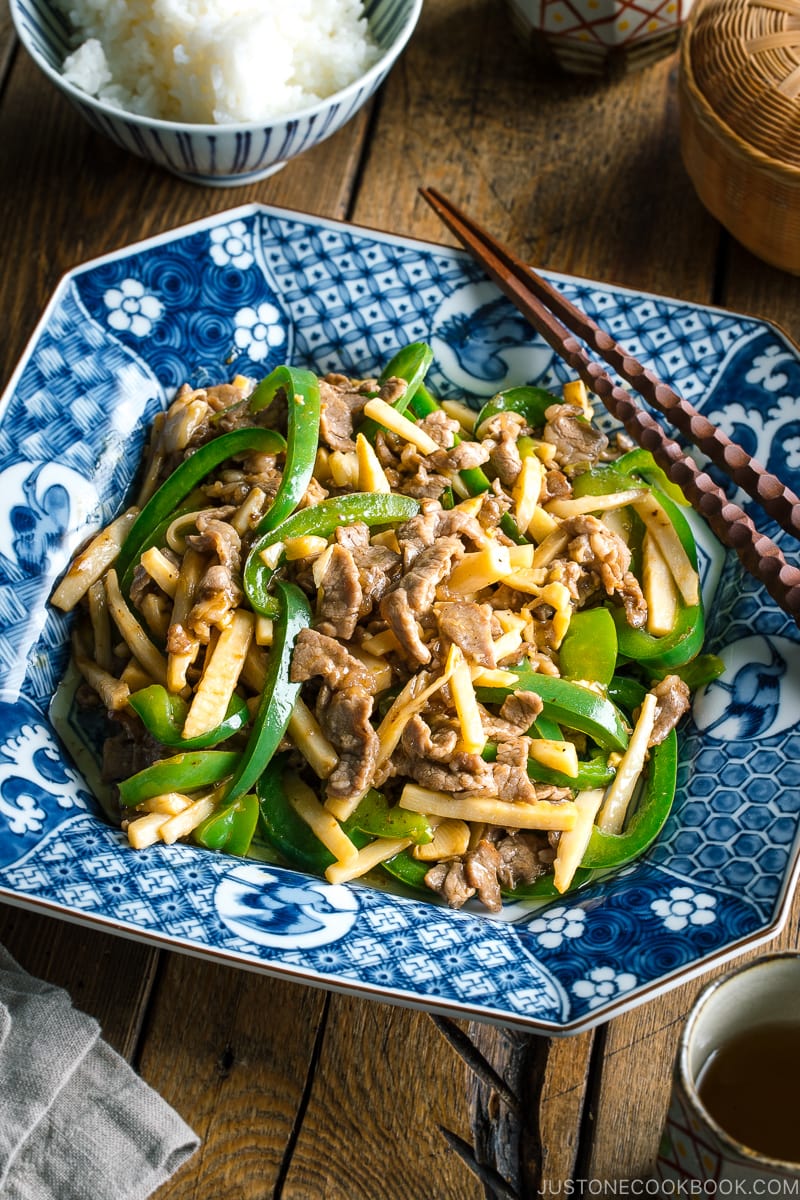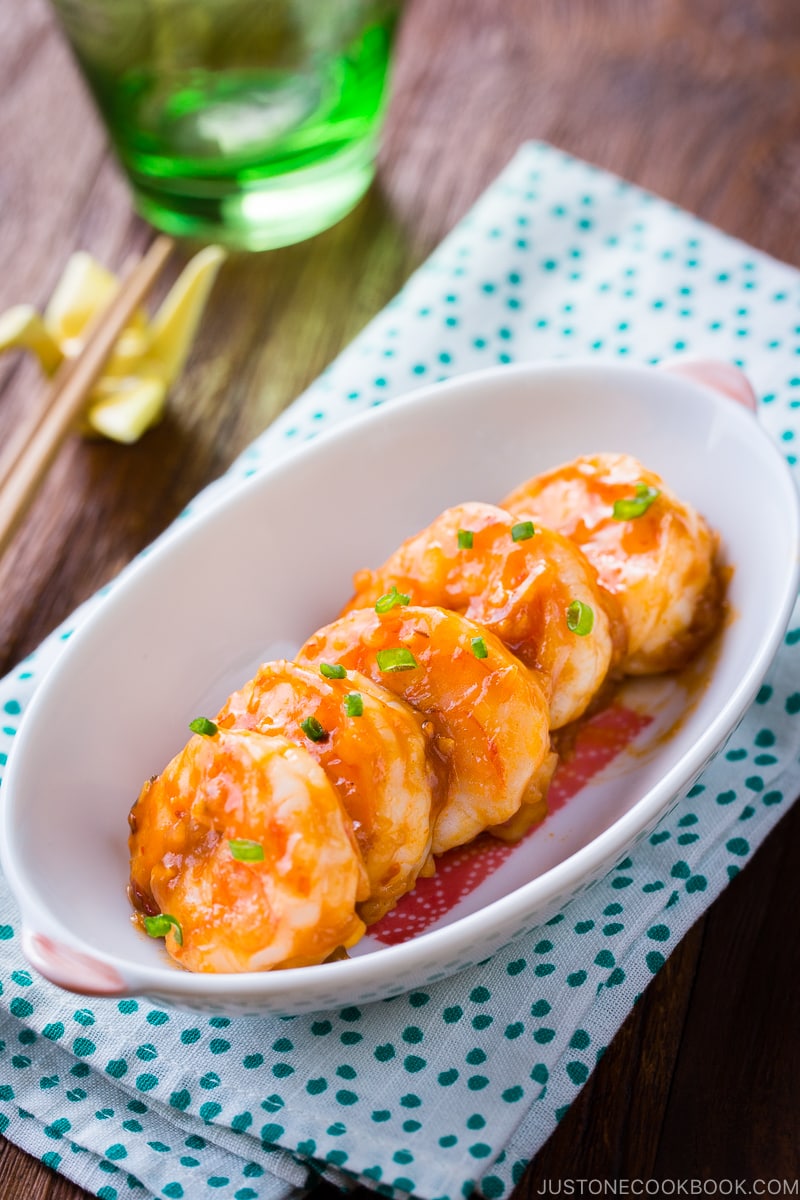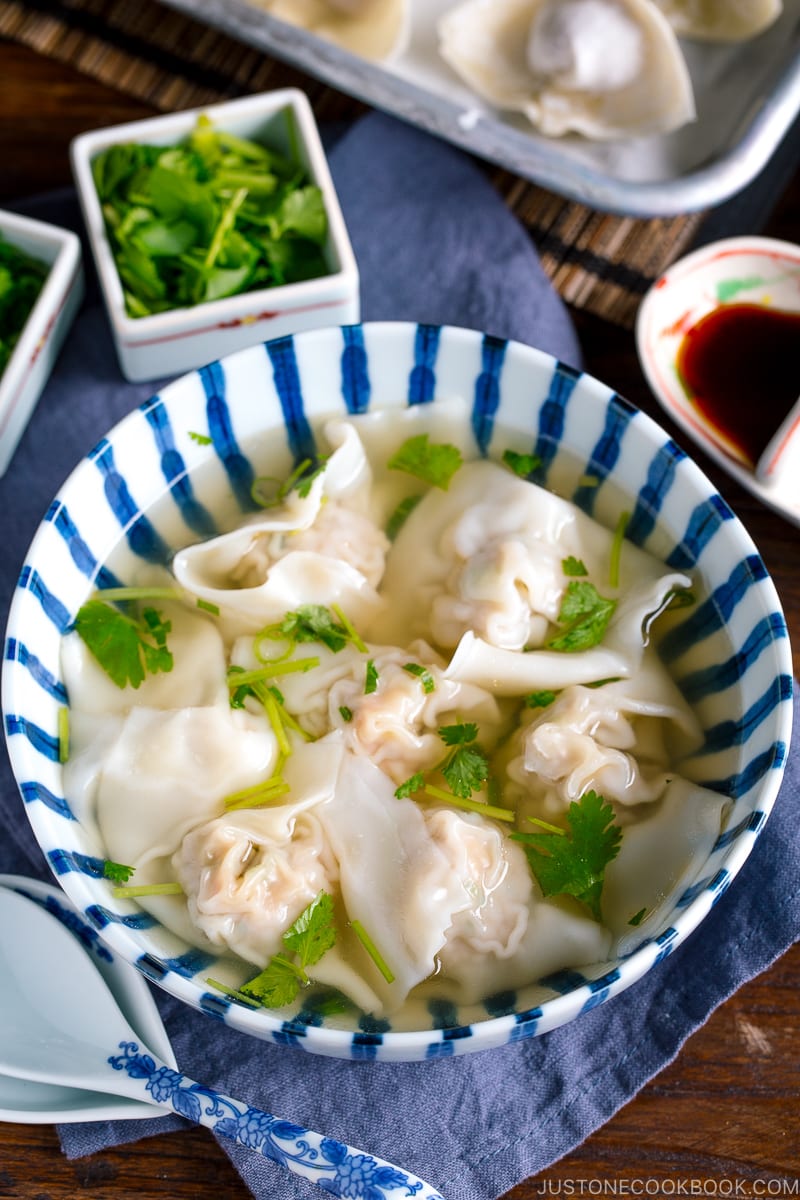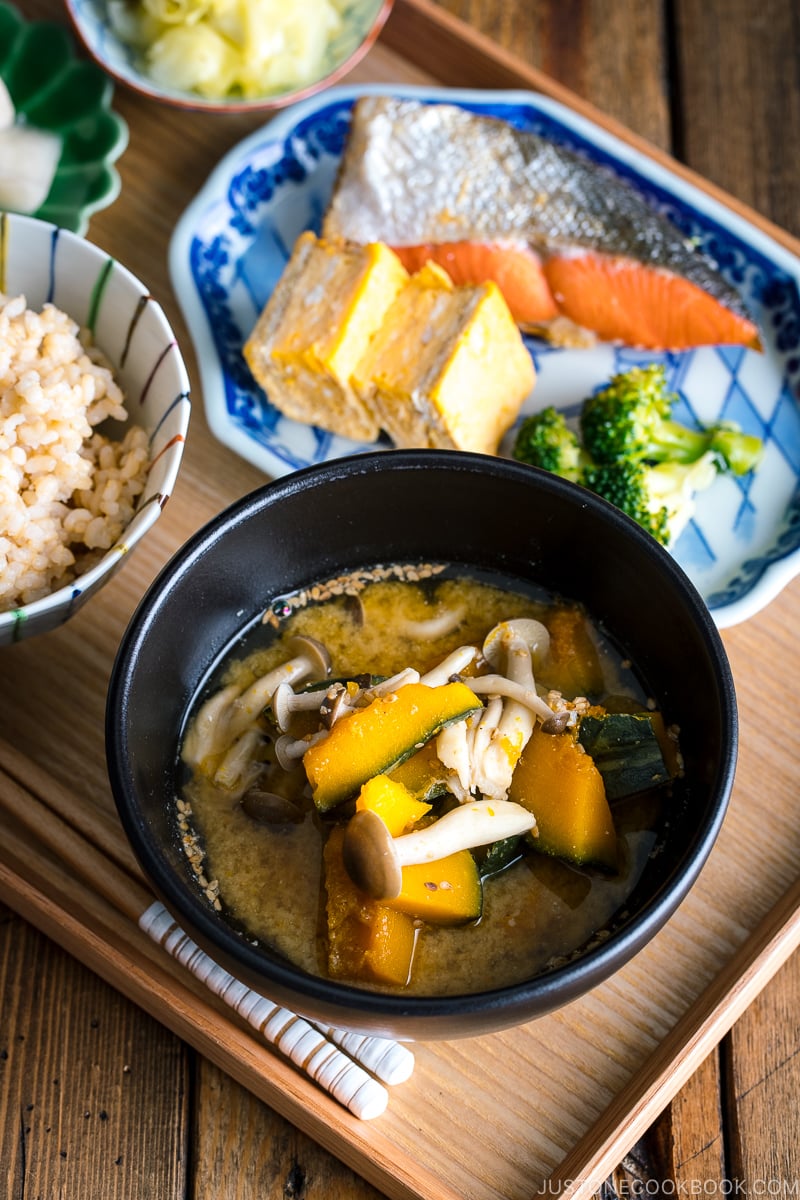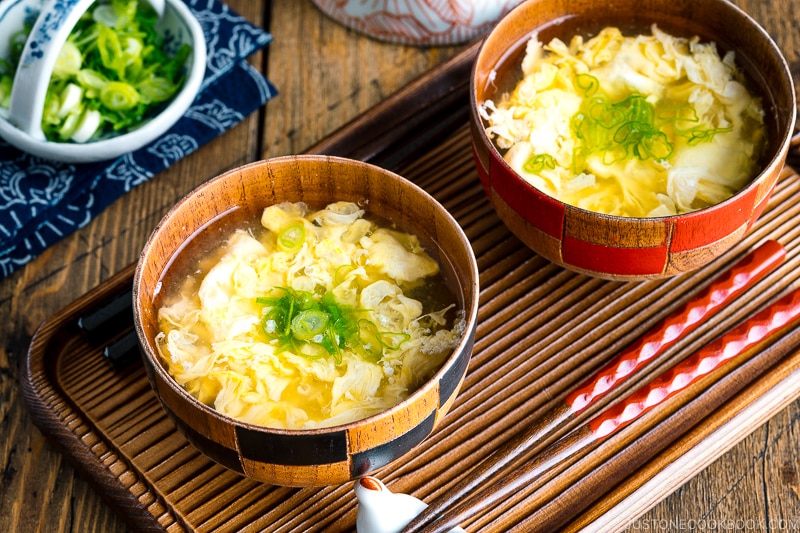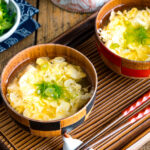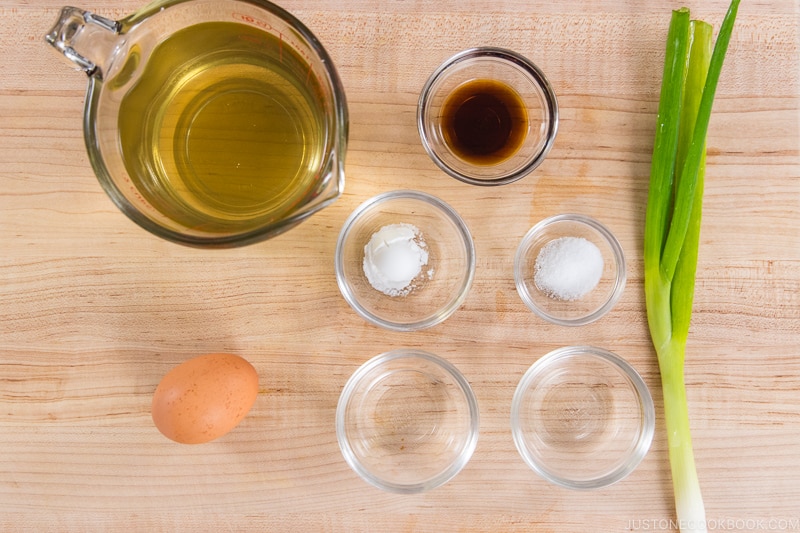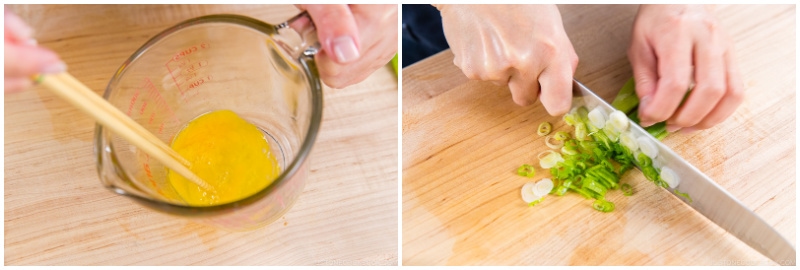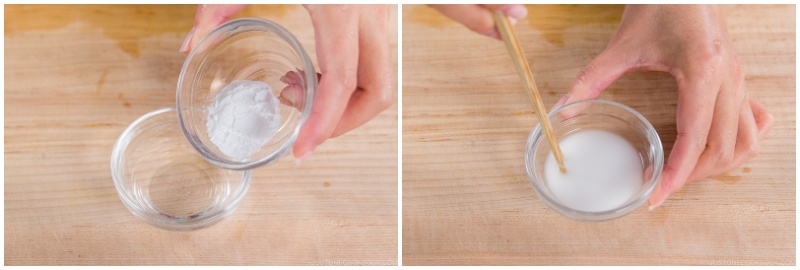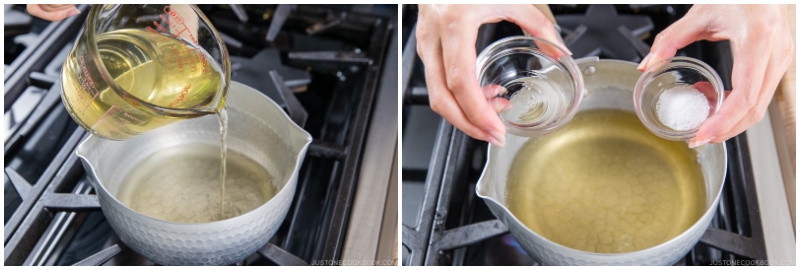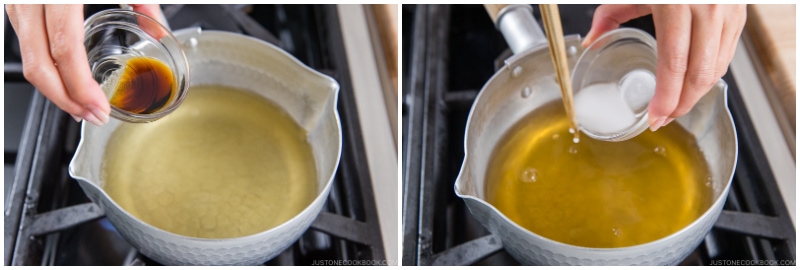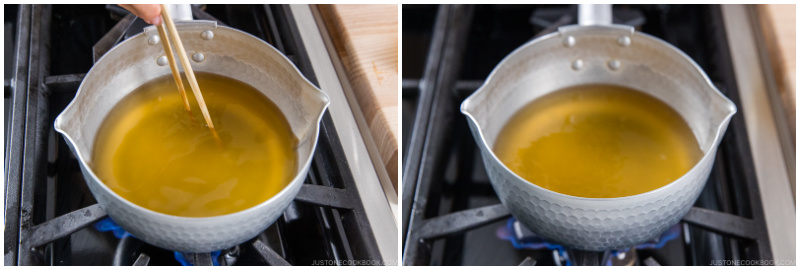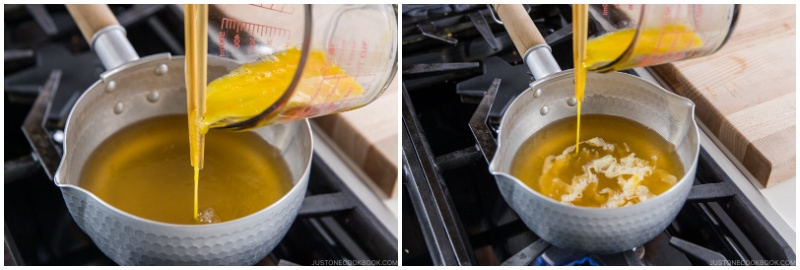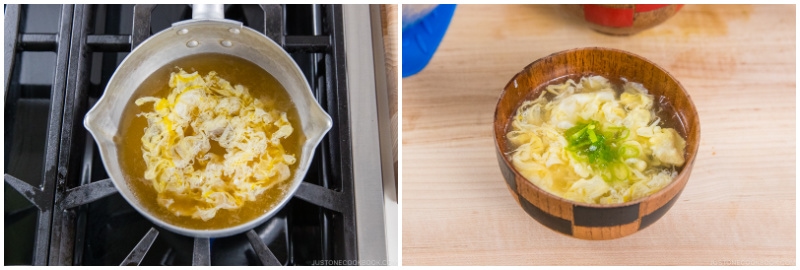Soup is a significant part of the Japanese meal, especially when serving Ichiju Sansai (一汁三菜; one soup three dishes) during family dinner. The meal typically includes steamed rice, the main protein, a few veggies or side dishes, and a soup. In addition to the quintessential miso soup, we also enjoy many different types of clear soups. Today I’d like to introduce Japanese Egg Drop Soup or Kakitamajiru (かきたま汁), a flavorful egg drop soup that uses minimal pantry ingredients. It’s quick and simple, and you’re going to love it!
What is Japanese Egg Drop Soup?
You might be more familiar with Chinese egg drop soup (sometimes referred to as egg flower soup) because it is almost a prerequisite in many Chinese restaurants and Asian takeouts. However, did you know that egg drop soup is also common in Japanese home cooking? Both Japanese and Chinese styles are indeed very similar to each other, as they both feature fluffy egg ribbons. This Japanese version of egg drop soup is known as Kakitamajiru. Kaki (掻き) means to scratch, rake, or sometimes includes the stirring motion, and tama (たま) comes from ‘tamago’ (たまご), meaning egg in Japanese. Jiru (汁) means soup.
Japanese vs. Chinese Egg Drop Soup
Here are some quick generic differences: Japanese egg drop soup
Use dashi (Japanese soup stock) as the soup base. It has a much lighter consistency, sometimes barely noticeable. Use potato starch to thicken. Always include soy sauce. Garnish with mitsuba (Japanese wild parsley). You can also use scallions as I did in this recipe.
Chinese egg drop soup
Use chicken broth or chicken stock. It has a thick consistency and sometimes turmeric is added for a rich yellow color. Use cornstarch slurry to thicken. Typical add-ons include julienned ginger, garlic, sweet corn kernels, and sometimes chives as garnish. It is flavored with sesame oil and white pepper as the final touches.
Ingredients for Japanese Egg Drop Soup
The best thing about kakitamajiru is that these 5 ingredients are most likely already in your kitchen. I call it my pantry soup!
Dashi (Japanese soup stock) – You can make homemade Awase Dashi or use a Dashi Packet for a quick shortcut. For a plant-based option, use Kombu Dashi and Vegan Dashi. Egg(s) Potato starch or cornstarch Soy sauce – I use light-colored usukuchi shoyu, but you can use regular Japanese soy sauce. Sake – A little bit of it adds nice umami.
And pinches of salt to emphasize the flavors and bring everything together.
How to Make Easy Egg Drop Soup
Various Add-On Ingredients
You can certainly throw in some other ingredients to bulk it up. Here are some common options; however, I recommend keeping the soup rather simple by adding just one additional ingredient besides the egg. The soup is best enjoyed for its simplicity
Green onion/scallion – I used it in today’s recipe. Kaiware daikon radishes Japanese mushrooms such as enoki, shiitake, shimeji, etc. Wakame seaweed Silken/soft tofu Julienned carrot
Cooking Tips
Use good dashi. I understand this is a basic tip, but if you want to make a delicious soup, the base stock is crucial. Here, we use dashi. Avoid using dashi powder when making egg drop soup, as the flavor tends to disappear quickly. Instead, make it from scratch or use a dashi packet.
Check the flavor of the soup before adding the egg. Oftentimes, when relying on a recipe, you may forget to taste what you’re cooking. It’s important to taste and adjust the taste of the soup before adding the beaten egg. Once the egg is added, do not touch the soup. We don’t want to break the fluffy egg ribbons.
Whisk the starch mixture one last time before adding to the soup because the starch tends to settle at the bottom of the bowl.
Drizzle slowly, using a chopstick as a guide. We use a long cooking chopstick as a guide to drizzle the beaten egg from a bowl (or measuring cup). Why drizzle slowly? As soon as the egg hits the hot broth, it should curl up and float. If you pour in too much, the beaten egg becomes heavy and drops to the bottom of the pot. Drizzle slowly as you move across the soup, providing plenty of space for the egg to bloom. Let the egg sit for a few quick seconds, and the soup is ready to be enjoyed!
What to Serve with Egg Drop Soup
You can serve this delicious soup as a light entrée or as a side dish to accompany Chuka Ryori (Japanese-Chinese Dishes) or other Chinese and Asian fares. Here are some of my favorites:
Quick & Tasty Fried Rice Mapo Tofu Beef and Green Pepper Stir-Fry Spicy Shrimp Stir-Fry Pork Kimchi Stir-Fry
How to Store Egg Drop Soup
You can store the leftover soup in an airtight container in the fridge for up to 3 days. The best way to reheat the soup is to warm it up in a pot on the stovetop until hot, stirring occasionally. If you prefer to microwave the soup, do it in 20-second intervals so the eggs won’t be overcooked. I don’t recommend storing it in the freezer.
More Delicious Soup Recipes
Classic Wonton Soup with Shrimp and Pork Vegetable Miso Soup Japanese Clear Clam Soup Kabocha Miso Soup Kenchinjiru (Japanese Vegetable Soup)
Wish to learn more about Japanese cooking? Sign up for our free newsletter to receive cooking tips & recipe updates! And stay in touch with me on Facebook, Pinterest, YouTube, and Instagram. Editor’s Note: This post was originally published on February 11, 20221. It was republished with more information on March 4, 2024.
